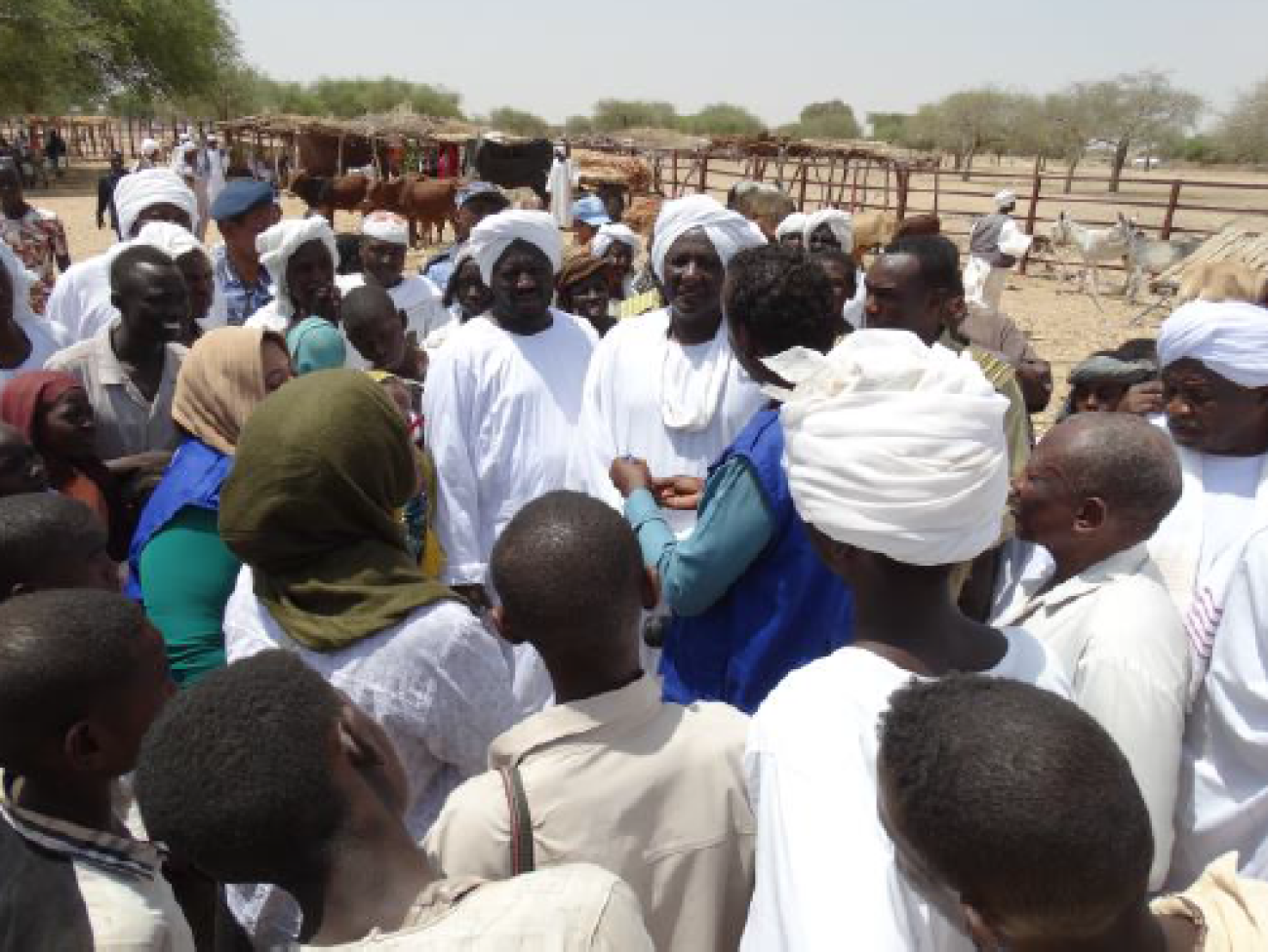Rehabilitation of markets and construction of water sources enhance social cohesion of different communities
Trade has always proved to be an important means for inter-communal dialogue. This was especially the case with the Abu Matarig Market located in Bahr El Arab, a cross-border region to South Sudan. The market used to be recognized as Darfur’s biggest cattle market, receiving around 8,000 cattle, 11,000 sheep, 4,000 goats and other animals (horses, donkeys) during its market days. Many tribes came from South Sudan during the rainy season with their herds. At its prime, the Abu Matarig Market offered not only opportunities for both farmers and pastoralists to buy, sell and exchange produce, but also acted as a central platform where local populations met and formed relationships to other tribes.
However, the past conflict in East Darfur proved harmful for the village market networks, particularly because the villages were abandoned by the locals. The Abu Matarig Market suffered as its usual cattle market was disrupted. Another recurrent problem the herders faced was the lack of a fence structure for cattle safe keeping, which meant cattle sometimes fled their owners.
To address the issues of the disrupted market networks in East Darfur, efforts emerged to revitalize the Abu Matarig Cattle Market. The UN, through IOM, installed a fence surrounding the Abu Matarig Market. IOM collaborated with the State Ministry of Finance in East Darfur, which contributed by reinforcing the base of the fencing work that IOM initiated.
“This is the biggest market in Darfur, we should work on conserving and maintaining it. So many traders from so many tribes come here, which is a proof that social coexistence exists in this locality and promotes economic development” proclaims Mohamed Ibrahim who is the Director General of the State Ministry of Finance in East Darfur during the Abu Matarig Market reopening ceremony held in April 2017.
Throughout 2017 the rehabilitation of Abu Matarig Market also included the construction of new offices, police check points and latrines. Additionally, IOM added a water yard in Abu Matarig village with an extended water network that serves the traders and their cattle in the market itself.
The rehabilitation of markets and construction of water sources facilitated the resumption of trade between diverse communities and livelihood groups (farmers and pastoralists) and serve the overall objective of enhancing social cohesion of different communities paving the way towards the restoration of trust and confidence between them. Both farmers and pastoralists have benefited from the rehabilitation of Abu Matarig Market in Bahr El Arab locality. These improvements have increased positive interactions between the North and the South, which have become central to easing tensions between the two countries. The market revitalization made peaceful coexistence a common goal to improve relationships and economic interdependence.




